The new generation of fashion critics, in their own words.
By Loïc Prigent
The new generation of fashion critics, in their own words.
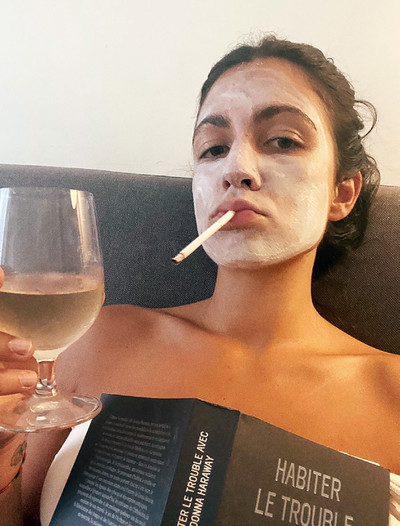
Without criticism, fashion would resemble an interminable football – or even worse, cricket! – match that no one understood. Luckily, critics – like sports commentators – do exist to help identify the players, the stakes, the champions, and the achievements.
The following series of questions and answers is an attempt to understand the new generation of fashion critics. The exercise clearly has its limits (if only because the questions were written by the older generation), but is nevertheless motivated by a genuine desire to uncover and understand what drives these new Suzy Menkes, these modern John Fairchilds, these one-person WWDs. Their media channels are their Instagram, YouTube and TikTok accounts. Their code of ethics is self-proclaimed – or not. Their point of view is fresh, visceral, informed, and quite often mocking and mordant. Some are read or watched by all the design studios in all the fashion houses, without ever once being invited to a show. They are buyers, sociologists, academics, or just passionately engaged schoolkids.
All are taking part in a golden age of fashion criticism: uninhibited, unfiltered, erudite, uncompromising, and in real time. And unjust, of course. But then an uncritical critic has another name: a press release. After all, aren’t subjectivity and a certain dedication fundamental parts of fashion? Alongside many other more positive values.
Some of these amateur critics are going to annoy you, some will go off course or lose the plot, some will make you smile, but others will open your eyes, reveal the beauty and the ridiculousness, and make fashion more intelligible, and therefore more intelligent.

Which media does your fashion criticism appear on?
Saveria Mendella: My Instagram account.
How do you define your role?
Saveria Mendella: Complicated, and indefinable on good days. I’m a PhD candidate, researcher, and consultant. I write, I speak. A lot of balls to keep juggling in the air.
What excites you during fashion week?
Saveria Mendella: The shows, of course!
What do you expect from a good fashion show?
Saveria Mendella: Press releases left on the chairs.
How do you convey your enthusiasm?
Saveria Mendella: By doing a review. I know that newer brands invite me for that, and I love it.
What made you want to examine fashion?
Saveria Mendella: Because it’s probably the only thing I know how to do. It’s even become my career. Fashion decryption deserves to be more well known and better understood.
‘What row do I sit in at Dior? The front. Via the livestream.’
What is the polite way of saying that a show was awful?
Saveria Mendella: Silence.
What row do you sit in at Dior?
Saveria Mendella: The front. Via the livestream.
Which other accounts influence you, and on which platforms?
Saveria Mendella: None. I really don’t have the time, even though I follow a lot of them as closely as I can. I avoid accounts that are too bitchy; they explain fashion in the wrong way. But fashion-media accounts remain an endless source of inspiration, for better and worse.
What are your favourite fashion shows of all time? First up, one that you attended.
Saveria Mendella: Chanel, Spring/Summer 2018, precisely because I was there. I was under the stands, as a PR assistant – but the fact remains, I attended a Karl show.
And what about an older one you didn’t actually attend?
Saveria Mendella: Voss, Alexander McQueen, Spring/Summer 2001. Last year I spent a lot of time working on the presence of birds in fashion. That show was a starting point that I really wanted to highlight in my research. McQueen was inspired by one of Joel-Peter Witkin’s photographs and by a Victorian asylum. The presence of feathers on the clothes and stuffed birds on the models made that collection a rare fashion moment when the wide use of animals, metaphorized, alive or dead, was so powerful. The images of that show – even today – allow you to see the too-quick and too-often-drawn parallel between the female and animal forms.
Who are your fashion critic heroes?
Saveria Mendella: Diana Vreeland and Anna Piaggi, for their grandiose and barbed tone. The anonymous author of the “Points de Vue” in 1930s Vogue, for fashion literature. Robin Givhan, the only journalist to have won a Pulitzer for a book about fashion. Carine Bizet, for everything.
What did you think of the infamous review by Virginie Mouzat in Le Figaro that destroyed Tom Ford’s show in 2011?
Saveria Mendella: To me, the duty of show reviews is to point out things that cannot be seen in photographs. You can comment on everything! Virginie Mouzat took the reader behind the scenes at a collection presentation, but also into what are usually the secrets of the relationship between creative directors and the press. She was able to settle some scores because she has a voice. It’s very contemporary. Also, this article may have lacked aesthetic arguments, but it at least restored the prestige of the freedom of the fashion press.
John Galliano insults you on the terrace of La Perle. What do you do?
Saveria Mendella: I readjust my look number 39 from Dior Spring/Summer 2013 by Raf Simons, turn around and walk away.

Which media do you use when you’re researching your fashion criticism?
Timothy Chernyaev: For photos I use the Vogue Runway app; for video, I use the YouTube channel content of the brand I am reviewing.
How do you define your role?
Timothy Chernyaev: Fashion editor.
What excites you during fashion week?
Timothy Chernyaev: Good clothes!
What do you expect from a really good fashion show?
Timothy Chernyaev: I expect it to be cohesive without feeling overly studied, and I look for variety. I like designers who show day-, leisure-, work-, evening-, casual-, and formalwear – and accessories.
How do you convey your enthusiasm?
Timothy Chernyaev: I like to go into details if I think something is really special; the more I show of something, the more I like it.
‘Virginie Mouzat criticizing Tom Ford’s appearance and physicality in Le Figaro comes off as quite rude.’
What made you want to examine fashion?
Timothy Chernyaev: I love seeing people go from being a small business to a household name. It’s so inspiring, especially when you’ve been following their work for a while.
What is the polite way of saying that a show was awful?
Timothy Chernyaev: I try not to cover things if I think they’re awful from start to finish. If I really think there’s nothing worth seeing in a collection, then I won’t share it.
What row do you sit in at Dior?
Timothy Chernyaev: We’ll see… I’m still waiting for them to respond to my invite request.
Which other accounts influence you, and on which platforms?
Timothy Chernyaev: TikTok has great fashion content. I love @simon.gold; @oldloserinbrooklyn; @tinyjewishgirl; @officialhambly; @ebcjpg.
What are your favourite fashion shows of all time? First up, one that you attended.
Timothy Chernyaev: I went to Rodarte’s Fall 2008 show; that was wonderful.
And what about an older one you didn’t actually attend?
Timothy Chernyaev: Christian Lacroix, Fall 2001 couture. I might have to create a post about it soon.
Who are your fashion critic heroes?
Timothy Chernyaev: Bridget Foley. I interned at Women’s Wear Daily and got to spend some time around her. She’s a wonderful writer.
What did you think of the infamous review by Virginie Mouzat in Le Figaro that destroyed Tom Ford’s show in 2011?
Timothy Chernyaev: I had never read it until just now. Criticizing his appearance and physicality comes off as quite rude.
John Galliano insults you on the terrace of La Perle. What do you do?
Timothy Chernyaev: Tell him the men’s sneakers at Margiela are bad and he really needs to work on them.
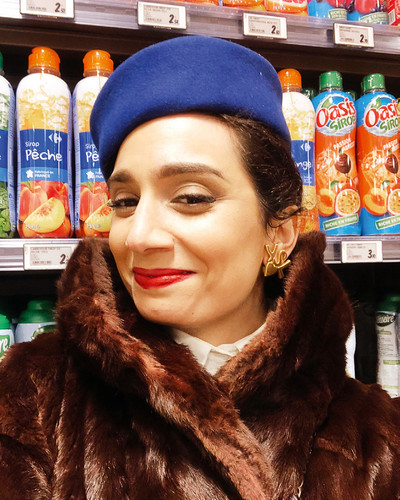
Which media do you use for your fashion criticism?
Dana Tarabey: Mainly, Instagram. I also have a YouTube channel that I’d like to develop, as well as a site (vaguely) and I’m trying TikTok (vaguely).
How do you define your role?
Dana Tarabey: Fashion critic, but also a popularizer of fashion studies who mixes fashion, social science, jokes, and poetic flourishes. The whole point is to escape the consensus through culture and to have a laugh. In an industry that says it wants to be more and more democratic, I’m trying to develop a capacity for analysis and promote critical thinking with solid foundations by making them accessible. The whole thing is really interactive. I’m always discussing with fashion students, professionals and fashion lovers who have all just had enough of the ‘like/don’t like’, and who are looking at fashion as it really is: a brilliant cultural object that needs deciphering.
What excites you during fashion week?
Dana Tarabey: The collective madness.
What do you expect from a good fashion show?
Dana Tarabey: A big fat fashion idea stuffed full of historical references, a narrative, and coherence. I need to think. I also concentrate on the edit, savoir-faire and tailoring. The icing on the cake is when it actually provokes an emotion, of whatever kind.
How do you convey your enthusiasm?
Dana Tarabey: In a freewheeling way, particularly in my Stories. Ever more complicated metaphors, messy outlining, GIFs, improbable songs, vlogs in pyjamas. I work really hard on the details and deliver everything ‘natural-painting’.
‘I convey my enthusiasm in a freewheeling way: complicated metaphors, messy outlining, GIFs, improbable songs, vlogs in pyjamas.’
What made you want to examine fashion?
Dana Tarabey: I’ve looked at it for ages, but not as ‘work’. I freelanced at various magazines and was given one piece of advice – keep your mouth shut; I wrote for different brands and was given one piece of advice – say that everything is amazing; I taught lots of classes and was given one piece of advice – never give less than 10 out of 20. All of it quietly got on my nerves. I just needed to express myself.
What is the polite way of saying that a show was awful?
Dana Tarabey: ‘There was a really big problem with the edit.’
What row do you sit in at Dior?
Dana Tarabey: Front row, in front of my computer.
Which other accounts influence you, and on which platforms?
Dana Tarabey: I avoid accounts that have the same angle as me, precisely so I’m not influenced. So I would say: @ideservecouture and @maviedanslaqueuedelacaf for the laughs; @jorisdamour, small account, massive brain; @juliensanders for the vintage expertise and lunacy; and @julienmaelstrom and @sapecommejadis with whom I share a love of history and jokes.
What are your favourite fashion shows of all time? First up, one that you attended.
Dana Tarabey: #worstquestion. Maison Rabih Kayrouz, Autumn/Winter 2020 haute couture, for its ‘couturier’s touch’, which I follow and am obsessed with. Perfect draping, backs to die for, pockets made with supernatural savoir-faire, bewitching hyper-couture volumes. And well before Armani and Demna, the models walking in perfect silence. It was a moment out of time, quasi-meditative, and so humble. Incredible to experience.
And what about an older one you didn’t actually attend?
Dana Tarabey: #worstquestion2. Anyways, Winter of Angels, Thierry Mugler, Autumn/Winter 1984-1985, at the Zénith in Paris. I’m fascinated by those decades of ‘flash cash and flamboyance’. This show was its climax. The idea of doing a show in what was then the coolest concert venue is brilliant. A show with tickets on sale to all, even more brilliant. It’s probably not Mugler’s best show in terms of fashion, but it was a demonstration of Mugler the total artist, with the crème de la crème of the coolest models on the planet (Pat Cleveland descending from the heavens as a glittery madonna, quell my heart!). It was all too much: 6,000 spectators, 250 looks, pyrotechnics worthy of a rock concert. It was the birth of the show as spectacle, but one in which clothing remains key.
Who are your fashion critic heroes?
Dana Tarabey: Marie-Christiane Marek, the Nelson Monfort [legendary TV interviewer] of French fashion with her live commentary on shows and her interviews with McQueen. Mademoiselle Agnès, for her culture and humour. Jean-Paul Cauvin, for his articles that are both brutal and stylish. Sabrina Champenois, for the beauty of her words. Tim Blanks, obviously, even if he’s calmed down over the years. And not a journalist, but a mega-mentor: [Studio BerНot head] Marie Rucki, who taught me everything.
What did you think of the infamous review by Virginie Mouzat in Le Figaro that destroyed Tom Ford’s show in 2011?
Dana Tarabey: Tom Ford had a complicated relationship with the media, but paradoxically, he was also one of those people who they never dared criticize (even less so in France). Just for having ‘dared’ she deserves a medal. She contributed to fashion free speech, which is no bad thing. In terms of form, the attack was made even more violent by how chic her language is, which I love. The substance of the article seems pretty subjective. You can clearly see she has a problem with Tom Ford personally – and why not – but that deserved a different article. The original article is actually pretty hybrid: half-criticism, half-‘I’m-going-to-do-him’.
John Galliano insults you on the terrace of La Perle. What do you do?
Dana Tarabey: I reply with a total zinger, which will be amazing in my head, rubbish in reality. And then I will start crying because he will have broken my heart.
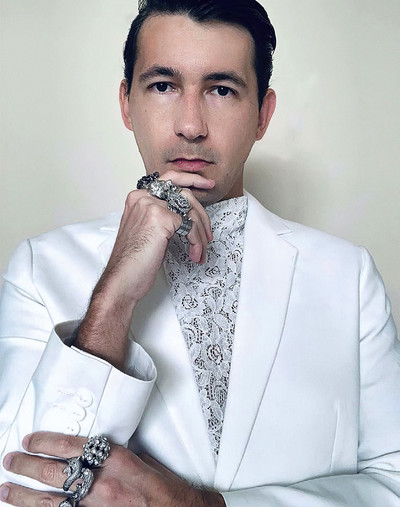
Which media do you use for your fashion criticism?
Hanan Besovic: I only use social media for fashion criticism. Instagram is a platform where I can fully express how I feel about something because I know what my audience responds to. TikTok is also a great platform. Instagram Stories can go in-depth, while on TikTok you have to find a way to get your point out in three minutes. An underestimated platform for criticism is Twitter; lots of good conversations and analysis happen there.
How do you define your role?
Hanan Besovic: People label me as fashion critic, which is flattering, but I don’t like to call myself that. I did not get into the fashion industry the traditional way by learning about fashion within the walls of an educational institution; I simply have a passion for it and want to contribute. I’ve researched fashion, read as much as I can, learned about the industry, and I keep doing that. I am not a critic, more a commentator.
What excites you during fashion week?
Hanan Besovic: Ideas make me excited; vision and thought, too. The entire fashion month is so hectic and busy, but it’s like going to a listening party of your favourite group. You get to see what they were busy with for the previous few months, their inspirations, their influences, and how all that resulted in clothes.
What do you expect from a good fashion show?
Hanan Besovic: I expect a lot. I am looking for a perfect balance of creativity, casting, set design, music, atmosphere, and wow moments. I’m difficult to satisfy when it comes to a good fashion show. Two moments that left me speechless in the last fashion month were Balenciaga and Versace, for two completely different reasons. With Balenciaga, we witnessed fashion history with models in a blizzard and emotional music playing. That was a slap of reality, especially with Demna’s voice opening the show and the Ukrainian flags. We were all mesmerized. I will never forget the Versace show because of the finale. The models finished walking and disappeared behind huge, white blocks. Then they lifted and ‘Attitude’ by Lewis OfMan played, and the room was filled with Versace. I can’t explain it better, but the oxygen in the room was in the shape of a gold Medusa. The lights started flashing and Donatella appears out of nowhere. I hate the word iconic, but that was ICONIC.
‘John Galliano insults you on the terrace of La Perle. What do you do? ‘Take my phone and hit record.’
How do you convey your enthusiasm?
Hanan Besovic: It mostly consists of humour and good pop-cultural, fashion moments. People love to laugh, so I try to put myself in the audience’s position and ask if they will get the joke. Just because it makes sense in my head doesn’t mean it will for everyone. When a fashion moment is good, it’s easy to convey the enthusiasm, like the recent Glenn Martens’ Gaultier collection.
What made you want to examine fashion?
Hanan Besovic: Honestly, I needed to vent. My page actually started on my real-life Instagram where I spoke about red-carpet dresses and my love for Alexander McQueen. But I was preaching to the wrong choir because my aunt thinks that McQueen’s Widows of Culloden is an indie movie from the early 1980s, so I had to change my strategy and find my own group of people. That is how @ideservecouture was created. I had to vent about what I like, what I don’t, and which red-carpet dress left me speechless.
What is the polite way of saying that a show was awful?
Hanan Besovic: I never want to say that. Are there shows that I don’t enjoy? Definitely. But maybe I am not the target audience for that collection, and that is fine. I always measure every show by what I would improve and how I would do it. That is my way of criticizing. I would never say that someone’s vision is wrong; maybe it’s just that I’m not seeing it.
What row do you sit in at Dior?
Hanan Besovic: Seat D20. LOL jk… I most recently sat in the second row.
Which other accounts influence you, and on which platforms?
Hanan Besovic: As I said, the atmosphere on Twitter is completely different to Instagram or TikTok. Twitter is a quick format; people are not into writing answers that are 400 words long, so they get to the point. There is always an interesting topic on Twitter, and it is a great source of fashion news. My favourite profiles are @2mayaz; @coutureisbeyond; @marioabad; @louispisano; and @schiaplicious (of course, I am a Schiaparelli fan).
What are your favourite fashion shows of all time? First up, one that you attended.
Hanan Besovic: A special place in my heart for the first ones I ever saw in person: first, Fall 2021 couture at Schiaparelli. I am a huge fan of Elsa and now Daniel Roseberry. That was the first time I saw a couture piece in person. A few days after Schiaparelli I was invited to see Valentino Fall 2021 couture. That was a trip to remember! It happened after Covid and that show embodied amazing clothes, location, music (Cosima has the voice of an angel), and atmosphere.
And what about an older one you didn’t actually attend?
Hanan Besovic: I will cheat on this one and mention two. Both by McQueen: Horn of Plenty, which in my opinion is perfect and the best fashion show of all time; the second is Plato’s Atlantis, which is the second-best fashion show of all time. If you want me to talk about these two shows, I will need more pages.
Who are your fashion-critic mentors?
Hanan Besovic: I don’t have a mentor, but I do admire certain fashion critics, like Alexander Fury or Robin Givhan. She has an unparalleled way with words and gets to the core so swiftly and precisely. I also love the work of Vanessa Friedman.
What did you think of the infamous review by Virginie Mouzat in Le Figaro that destroyed Tom Ford’s show in 2011?
Hanan Besovic: I am not a huge fan of it; it just comes across as mean. It is OK not to like something, but at the end of the day, delivery matters. If you go to Instagram or Twitter today and see what people think about some collections, Virginie’s article would not seem that controversial at all. Virginie maybe forgot that the clothes are what matters; there were some personal digs towards Tom.
John Galliano insults you on the terrace of La Perle. What do you do?
Hanan Besovic: Take my phone and hit record.
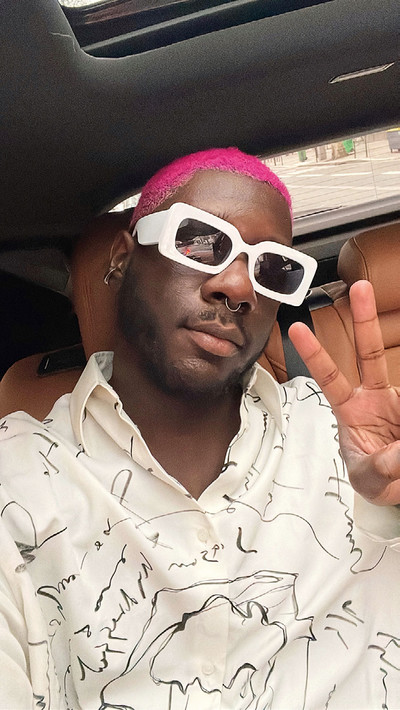
Which media do you use for your fashion criticism?
Louis Pisano: Instagram. It gets a bit messy at times when there’s so much politics involved in working with brands in other capacities and also being tied to major publications.
How do you define your role?
Louis Pisano: It depends on the day, but I would say I’m a personality, because everything I do –whether it’s writing or creating content – is about my personality.
What excites you during fashion week?
Louis Pisano: Knowing that I get to see so many friends, thinking of all the gossip at lunch and messy dinners and drunken late nights spent dancing makes it all worth it. And of course, the clothes, what we will be wearing next season, who I am going to be next season.
What do you expect from a good fashion show?
Louis Pisano: An amazing soundtrack and an ambience. I’ve seen a lot of great collections with shitty music that created no ambience and affected how you (or at least I) perceived the experience, and I’ve seen a lot of not-so-great collections that have been saved by how they were presented.
How do you go about conveying your enthusiasm?
Louis Pisano: ‘I’M SCREAMING.’ Usually I’m not actually screaming.
What made you want to examine fashion?
Louis Pisano: Growing up as a very obviously gay kid, it was the one thing out of all my interests that people took my advice on. I just ran with it.
‘Polite? Have you ever read my tweets or IG Stories? I’m kidding, I mean it depends on the situation. I’m learning how to be more tactful.’
What is the polite way of saying that a show was awful?
Louis Pisano: Polite? Have you ever read my tweets or IG Stories? I’m kidding, It truly depends on the situation. I’m learning how to be more tactful because as a certain editor of a certain magazine I may or may not work with said: ‘Here at [redacted] magazine, if we don’t like something, we don’t talk about it.’ All my life, my problem has been not having a filter, but usually I’ll just say, ‘It was a great experience.’
What row do you sit in at Dior?
Louis Pisano: Sitting!? LOL. If I’m sitting anywhere it’s across the street from the venue, on the terrace of a cafО.
Which other accounts influence you, and on which platforms?
Louis Pisano: If you had asked me this a few months ago I would have had a whole list to name, but honestly, at the moment, none. I feel like the fashion-criticism community on Instagram was for a moment on the same path and then the first wave of us got all these amazing opportunities and found our lanes. I used to examine so many accounts and be like, I wish I was more educated on historical references like this person or I wish I could create review graphics like that person, but then I realized the thing that really works for me is just being me, as messy and chaotic as that is. I’d rather be that and learning as I go along rather than comparing myself to other accounts.
What are your favourite fashion shows of all time? First up, one that you attended.
Louis Pisano: Jean Paul Gaultier, Spring/Summer 2013. In my fashion-blogger era I snuck in. It was the first JPG show I ever went to, and it was incredible and sexy: all these hot boys with beards and corsets walking to ‘Vogue’ and Amanda Lear closing the show. The energy was unlike any show I had been to: people were standing up, dancing, whistling and cheering and yelling. It was like being in a club in the middle of the day.
And what about an older one you didn’t actually attend?
Louis Pisano: Dior, cruise 2010 by Galliano, in Shanghai! I literally watch it every week, the soundtrack, the staging, the clothes. Ayeyeeeee… they really snapped with that show.
Who are your fashion-critic heroes?
Louis Pisano: Evan Ross Katz, PamBoy, Mario Abad. They are all people in this space who had a profound effect on how I approach what I do.
What did you think of the infamous review by Virginie Mouzat in Le Figaro that destroyed Tom Ford’s show in 2011?
Louis Pisano: I mean, she really let him have it. It’s like, just when you think she’d landed her hardest blow, she punched even harder. When she described the collection as inventory for a not-yet-accepted-by-the-fashion-industry Kim Kardashian, I truly lost my mind. That whole review makes me laugh and cry at the same time. It’s a play-by-play train wreck. Tragic but comic – a tragicomedy.
John Galliano insults you on the terrace of La Perle. What do you do?
Louis Pisano: First I’m reminding this bitch he’s banned, then I’m tweeting about it.
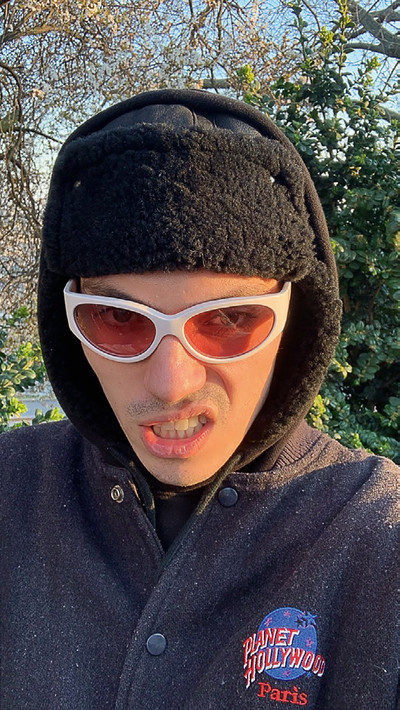
How do you define your role?
Elias (Lyas) Medini: Fashion commentator? I don’t really analyse the show; what I offer is more an ironic and referenced reading of a collection.
Which media do you use for your fashion criticism?
Elias (Lyas) Medini: Instagram.
What excites you during fashion week?
Elias (Lyas) Medini: The passion and energy that fashion weeks bring to Paris or Milan, London or New York. Fashion brings people together and being able to dance with Cardi B at midnight before going home to your tiny apartment at 2am to eat microwaved leftover pasta reinforces the idea that anything is possible.
What do you expect from a good fashion show?
Elias (Lyas) Medini: Like a total work of art, I expect fashion that’s stimulating. And for me that often comes from the story that a show is telling. If there’s only technique, it’s not art; if there’s only story and no technique, it’s not fashion. A good show has to find the perfect balance.
How do you convey your enthusiasm?
Elias (Lyas) Medini: Is it ever really conveyed?
‘I had already fare-dodged on the train to Paris, so I thought I might as well try to sneak into Vetements, too.’
What made you want to examine fashion?
Elias (Lyas) Medini: To begin with, to share my enthusiasm or – occasionally – my disgust. And then to explain to people who watch my Stories what I see in fashion. Bringing fashion to a wider audience, making it accessible through humour and pop-culture or political references. So, yes, I can comment on a Casablanca show by talking about Nicolas Sarkozy’s Libyan money.
What is the polite way of saying that a show was awful?
Elias (Lyas) Medini: I rarely find a polite way of saying a show is awful, but as I have to choose one, I’d say: ‘This is some fucking disrespectful shit. I don’t ever wanna see that bullshit again.
What row do you sit in at Dior?
Elias (Lyas) Medini: Dior by Raf Simons? Front row. Dior by John Galliano? Front row. Dior by Hedi Slimane? Front row. Dior by Kim Jones or Maria-Grazia Chiuri? Any row because I wouldn’t go.
Which other accounts influence you, and on which platforms?
Elias (Lyas) Medini: @osamachabbi. He comments and analyses fashion in depth, more technically than I can do, and I find his investment in his Stories fascinating. He is so passionate.
What are your favourite fashion shows of all time? First up, one that you attended.
Elias (Lyas) Medini: Vetements, Spring/Summer 2019. The show was under the périphérique, a place that was the polar opposite of the idea I had of a show. It was in June, it was hot, and I was sweating about the idea of being turned away at the entrance. I had already fare-dodged on the train to Paris, so I thought I might as well try to sneak into Vetements, too. After making a scene at the entrance when I was refused entry they finally let me in, and I understood: fashion was a method of self-expression, just as much as cinema, painting or dance. I left with a new passion and Vetements-customized bottle of Evian. I’m still mad at my mother who threw it away ‘because it was empty’.
And what about an older one you didn’t actually attend?
Elias (Lyas) Medini: Plato’s Atlantis. I dream about it sometimes – because Alexander McQueen; because Nick Knight; because ‘Bad Romance’; because technology in the service of art; because he told a story of a dream of nature; because I dream of buying Armadillo heels and exhibiting them in a glass cube in the middle of my studio.
Who are your fashion-critic heroes?
Elias (Lyas) Medini: I don’t know if you’ve heard of him, but he’s on TV now and again, and he’s written a couple of books: @loicprigent.
What did you think of the infamous review by Virginie Mouzat in Le Figaro that destroyed Tom Ford’s show in 2011?
Elias (Lyas) Medini: The balls! I am for honest fashion criticism – even if it’s subjective – that’s committed and impartial (perhaps not in this case). It’s just being lost more and more. It’s become impossible for journalists to say what they really think about a collection or a designer. They’re scared: the advertisers and next invitations are like a muzzle. It’s sad. #fashionnightmare.
John Galliano insults you on the terrace of La Perle. What do you do?
Elias (Lyas) Medini: I order a pastis at џ3.50 – shit! Credit card minimum: џ15. Never mind, I’ll take the bottle and will share it with John. Maybe that will calm his soul.





